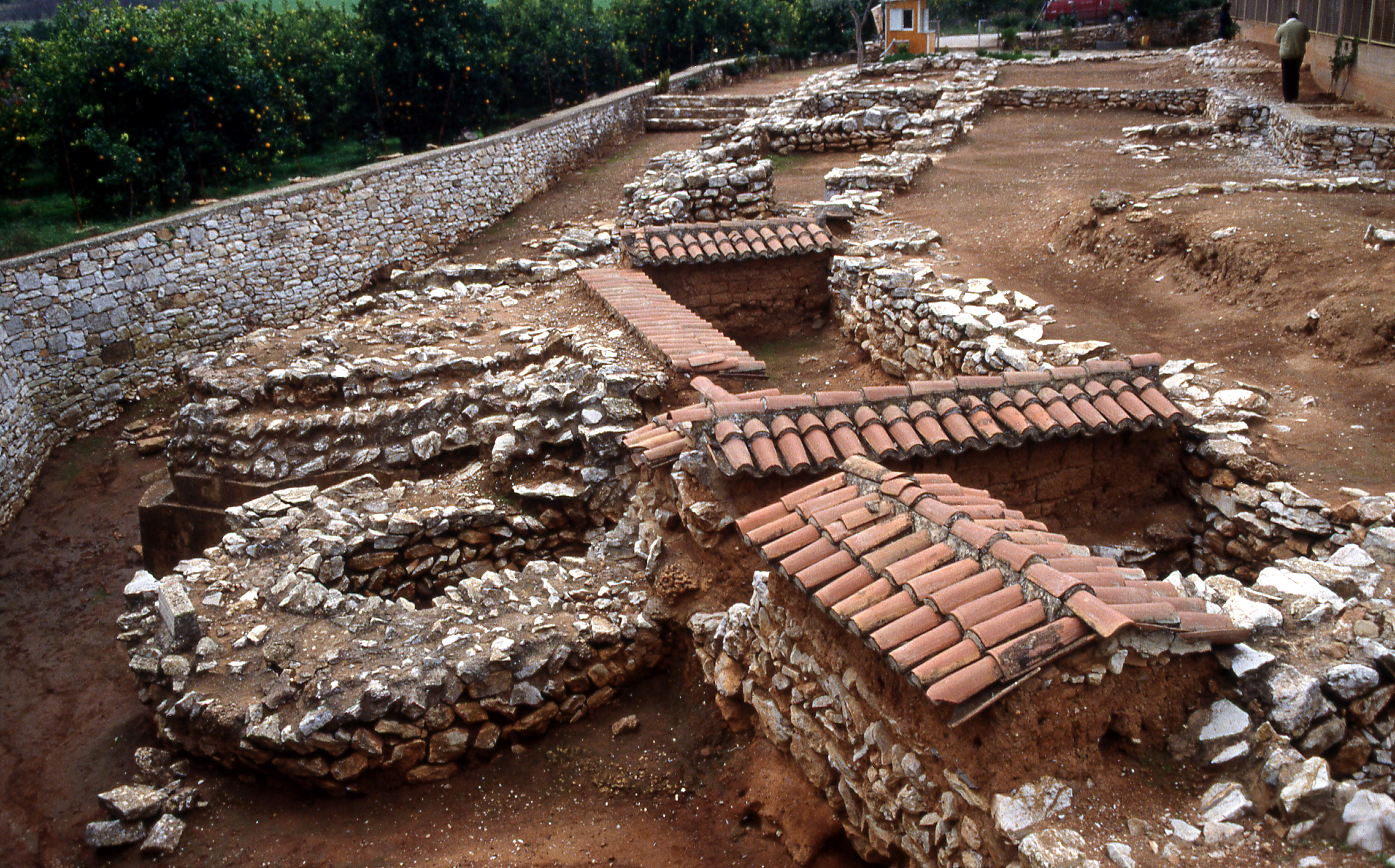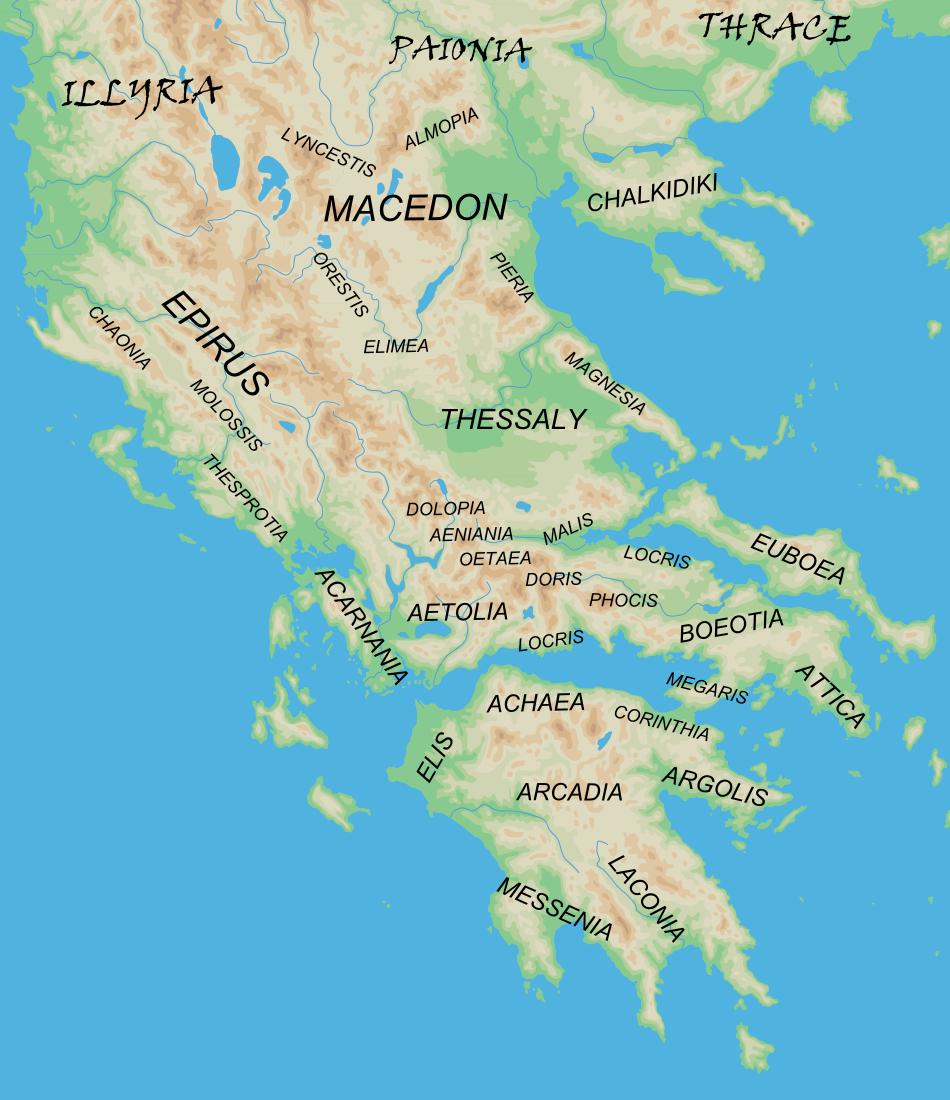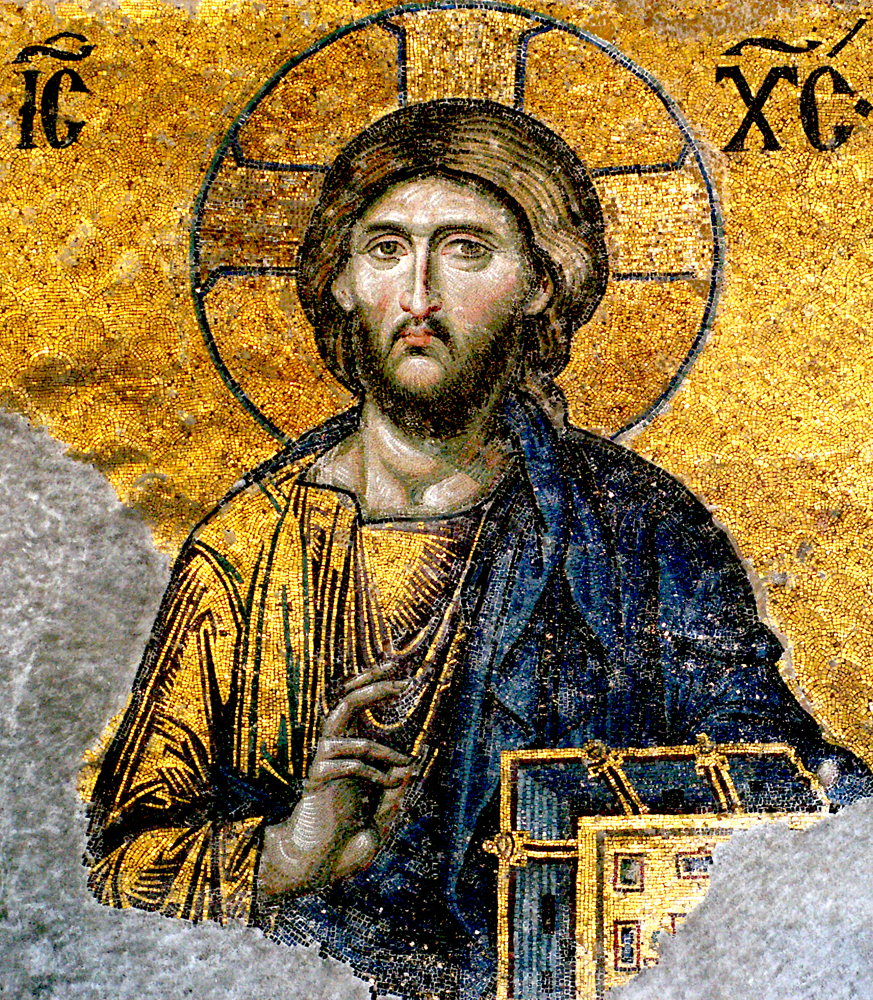|
Prosymnus
Prosymnus (Ancient Greek: Πρόσυμνος) (also known as Polymnus (Πόλυμνος) and Hypolipnus) was, in Greek mythology, a shepherd living near the reputedly bottomless Alcyonian Lake, hazardous to swimmers, which lay in the Argolid, on the coast of the Gulf of Argos, near the prehistoric site of Lerna. Prosymnus and Dionysus The wine god Dionysus encountered Prosymnus on his way to Hades to rescue his mother Semele. The shepherd offered to guide Dionysus to the entrance by rowing him to the middle of the lake. As a reward for his assistance, Prosymnus demanded to have intercourse with Dionysus, who was to assume the passive role. Dionysus took an oath to consummate the request upon coming back from Hades.. Cf. However, when Dionysus returned to earth by a different route, he found that Prosymnus had meanwhile died. Dionysus went to his tomb, wishing to keep his promise and "experiencing a desire to be penetrated". He carved a piece of fig wood into the shape of a phall ... [...More Info...] [...Related Items...] OR: [Wikipedia] [Google] [Baidu] |
Dionysus
In ancient Greek religion and Greek mythology, myth, Dionysus (; ) is the god of wine-making, orchards and fruit, vegetation, fertility, festivity, insanity, ritual madness, religious ecstasy, and theatre. He was also known as Bacchus ( or ; ) by the Greeks (a name later adopted by the Ancient Rome, Romans) for a frenzy he is said to induce called ''baccheia''. His wine, music, and ecstatic dance were considered to free his followers from self-conscious fear and care, and subvert the oppressive restraints of the powerful. His ''thyrsus'', a fennel-stem sceptre, sometimes wound with ivy and dripping with honey, is both a beneficent wand and a weapon used to destroy those who oppose his Cult of Dionysus, cult and the freedoms he represents. Those who partake of his mysteries are believed to become possessed and empowered by the god himself. His origins are uncertain, and his cults took many forms; some are described by ancient sources as Thrace, Thracian, others as Greek. In O ... [...More Info...] [...Related Items...] OR: [Wikipedia] [Google] [Baidu] |
Alcyonian Lake
In classical Greece, Lerna () was a region of springs and a former lake located in the municipality of the same name, near the east coast of the Peloponnesus, south of Argos. Even though much of the area is marshy, Lerna is located on a geographically narrow point between mountains and the sea, along an ancient route from the Argolid to the southern Peloponnese; this location may have resulted in the importance of the settlement. Its site near the village Mili at the Argolic Gulf is most famous as the lair of the Lernaean Hydra, the chthonic many-headed water snake, a creature of great antiquity when Heracles killed it, as the second of his labors. The strong Karstic springs remained; the lake, diminished to a silt lagoon by the 19th century, has vanished. Lerna is notable for several archaeological sites, including an Early Bronze Age structure known as House of the Tiles, dating to the Early Helladic period II (2500–2300 BC). Myths The secret of the Lernaean spring w ... [...More Info...] [...Related Items...] OR: [Wikipedia] [Google] [Baidu] |
Semele
Semele (; ), or Thyone (; ) in Greek mythology, was the youngest daughter of Cadmus and Harmonia (Greek goddess), Harmonia, and the mother of Dionysus by Zeus in one of his many origin myths. Certain elements of the cult of Dionysus and Semele came from the Phrygians. These were modified, expanded, and elaborated by the Ionian Greeks, Greek invaders and colonists. Dorians, Doric Greek historian Herodotus (c. 484–425 BC), born in the city of Halicarnassus under the Achaemenid Empire, who gives the account of Cadmus, estimates that Semele lived either 1,000 or 1,600 years prior to his visit to Tyre, Lebanon, Tyre in 450 BC at the end of the Greco-Persian Wars (499–449 BC) or around 2050 or 1450 BC. In Rome, the goddess #In Roman culture, Stimula was identified as Semele. Semele was the subject of the now lost Greek tragedy, tragedy by Aeschylus called ''Semele'' (''Σεμέλη'') or ''Wool-Carders'' (''Ξάντριαι''). Etymology According to some linguists the name Seme ... [...More Info...] [...Related Items...] OR: [Wikipedia] [Google] [Baidu] |
Ancient Greek
Ancient Greek (, ; ) includes the forms of the Greek language used in ancient Greece and the classical antiquity, ancient world from around 1500 BC to 300 BC. It is often roughly divided into the following periods: Mycenaean Greek (), Greek Dark Ages, Dark Ages (), the Archaic Greece, Archaic or Homeric Greek, Homeric period (), and the Classical Greece, Classical period (). Ancient Greek was the language of Homer and of fifth-century Athens, fifth-century Athenian historians, playwrights, and Ancient Greek philosophy, philosophers. It has contributed many words to English vocabulary and has been a standard subject of study in educational institutions of the Western world since the Renaissance. This article primarily contains information about the Homeric Greek, Epic and Classical periods of the language, which are the best-attested periods and considered most typical of Ancient Greek. From the Hellenistic period (), Ancient Greek was followed by Koine Greek, which is regar ... [...More Info...] [...Related Items...] OR: [Wikipedia] [Google] [Baidu] |
Greek Mythology
Greek mythology is the body of myths originally told by the Ancient Greece, ancient Greeks, and a genre of ancient Greek folklore, today absorbed alongside Roman mythology into the broader designation of classical mythology. These stories concern the ancient Greek religion's view of the Cosmogony, origin and Cosmology#Metaphysical cosmology, nature of the world; the lives and activities of List of Greek deities, deities, Greek hero cult, heroes, and List of Greek mythological creatures, mythological creatures; and the origins and significance of the ancient Greeks' cult (religious practice), cult and ritual practices. Modern scholars study the myths to shed light on the religious and political institutions of ancient Greece, and to better understand the nature of mythmaking itself. The Greek myths were initially propagated in an oral tradition, oral-poetic tradition most likely by Minoan civilization, Minoan and Mycenaean Greece, Mycenaean singers starting in the 18th century&n ... [...More Info...] [...Related Items...] OR: [Wikipedia] [Google] [Baidu] |
Argolid
The regions of ancient Greece were sub-divisions of the Hellenic world as conceived by the ancient Greeks, shown by their presence in the works of ancient historians and geographers or in surviving legends and myths. Conceptually, there is no clear theme to the structure of these regions. Some, particularly in the Peloponnese, can be seen primarily as distinct geo-physical units, defined by physical boundaries such as mountain ranges and rivers. Conversely, the division of central Greece between Boeotia, Phocis, Doris and the three parts of Locris, seems to be attributable to ancient tribal divisions and not major geographical features. Both types of regions retained their identity throughout the Greek Dark Ages and its tumultuous changes in the local population and culture, giving them a less political and more symbolic presence. Other geographical divisions not identified with the aforementioned areas did, however, change over time, suggesting a closer connection with tribal ... [...More Info...] [...Related Items...] OR: [Wikipedia] [Google] [Baidu] |
Hades
Hades (; , , later ), in the ancient Greek religion and Greek mythology, mythology, is the god of the dead and the king of the Greek underworld, underworld, with which his name became synonymous. Hades was the eldest son of Cronus and Rhea (mythology), Rhea, although this also made him the last son to be Cronus#Mythology, regurgitated by his father. He and his brothers, Zeus and Poseidon, defeated their father's generation of gods, the Titan (mythology) , Titans, and claimed joint rulership over the cosmos. Hades received the underworld, Zeus the sky, and Poseidon the sea, with the solid earth (long the province of Gaia (mythology) , Gaia) available to all three concurrently. In artistic depictions, Hades is typically portrayed holding a bident and wearing his cap of invisibility , helm with Cerberus, the Polycephaly, three-headed dogs in religion#Religions, myths, legends, and cultures, guard-dog of the underworld, standing at his side. Roman-era mythographers eventually ... [...More Info...] [...Related Items...] OR: [Wikipedia] [Google] [Baidu] |
Dionysian Mysteries
The Dionysian Mysteries were a ritual of ancient Greece and Rome which sometimes used intoxicants and other trance-inducing techniques (like dance and music) to remove inhibitions. It also provided some liberation for people marginalized by Greek society, such as slaves, outlaws, and non-citizens. In their final phase the Mysteries shifted their emphasis from a chthonic, underworld orientation to a transcendental, mystical one, with Dionysus changing his nature accordingly. By its nature as a mystery religion reserved for the initiated, many aspects of the Dionysian cult remain unknown and were lost with the decline of Greco-Roman polytheism. Modern knowledge is derived from descriptions, imagery and cross-cultural studies. Origins The Dionysian Mysteries of mainland Greece and the Roman Empire are thought to have evolved from a more primitive initiatory cult of unknown origins. It spread throughout the Mediterranean region by the start of the Classical Greek period. It ... [...More Info...] [...Related Items...] OR: [Wikipedia] [Google] [Baidu] |
Gaius Julius Hyginus
Gaius Julius Hyginus (; 64 BC – AD 17) was a Latin author, a pupil of the scholar Alexander Polyhistor, and a freedman of Augustus, and reputed author of the '' Fabulae'' and the '' De astronomia'', although this is disputed. Life and works Hyginus may have originated either from Spain, or from the Egyptian city of Alexandria. He was elected superintendent of the Palatine library by Augustus according to Suetonius' ''De Grammaticis'', 20. Suetonius remarks that Hyginus fell into great poverty in his old age and was supported by the historian Clodius Licinus. Hyginus was a voluminous author: his works included topographical and biographical treatises, commentaries on Helvius Cinna and the poems of Virgil, and disquisitions on agriculture and bee-keeping. All these are lost. Attributed works Two Latin works which have survived under the name of Hyginus are a mythological handbook, known as the ''Genealogiae'' or the '' Fabulae'', and an astronomical work, entitled '' D ... [...More Info...] [...Related Items...] OR: [Wikipedia] [Google] [Baidu] |
Clement Of Alexandria
Titus Flavius Clemens, also known as Clement of Alexandria (; – ), was a Christian theology, Christian theologian and philosopher who taught at the Catechetical School of Alexandria. Among his pupils were Origen and Alexander of Jerusalem. A convert to Christianity, he was an educated man who was familiar with Ancient Greek philosophy, classical Greek philosophy and Ancient Greek literature, literature. As his three major works demonstrate, Clement was influenced by Hellenistic philosophy to a greater extent than any other Christian thinker of his time, and in particular, by Plato and the Stoicism, Stoics. His secret works, which exist only in fragments, suggest that he was familiar with pre-Christian Judaism, Jewish esotericism and Gnosticism as well. In one of his works he argued that Greek philosophy had its origin among non-Greeks, claiming that both Plato and Pythagoras were taught by Egyptian scholars. Clement is usually regarded as a Church Father. He is venerated as a ... [...More Info...] [...Related Items...] OR: [Wikipedia] [Google] [Baidu] |
Arnobius
Arnobius (died c. 330) was an early Christian apologist of Berber origin during the reign of Diocletian (284–305). According to Jerome's ''Chronicle,'' Arnobius, before his conversion, was a distinguished Numidian rhetorician at Sicca Veneria (El Kef, Tunisia), a major Christian center in Proconsular Africa, and owed his conversion to a premonitory dream. However, Arnobius writes dismissively of dreams in his surviving book. According to Jerome, to overcome the doubts of the local bishop as to the earnestness of his Christian belief he wrote (c. 303, from evidence in IV:36) an apologetic work in seven books, which St. Jerome calls but which is entitled in the only (9th-century) manuscript that has survived. Jerome's reference, his remark that Lactantius was a pupil of Arnobius and the surviving treatise are all the surviving facts about Arnobius. was composed in response to arguments justifying Diocletian's persecution of Christians by claiming that Christians had brough ... [...More Info...] [...Related Items...] OR: [Wikipedia] [Google] [Baidu] |







